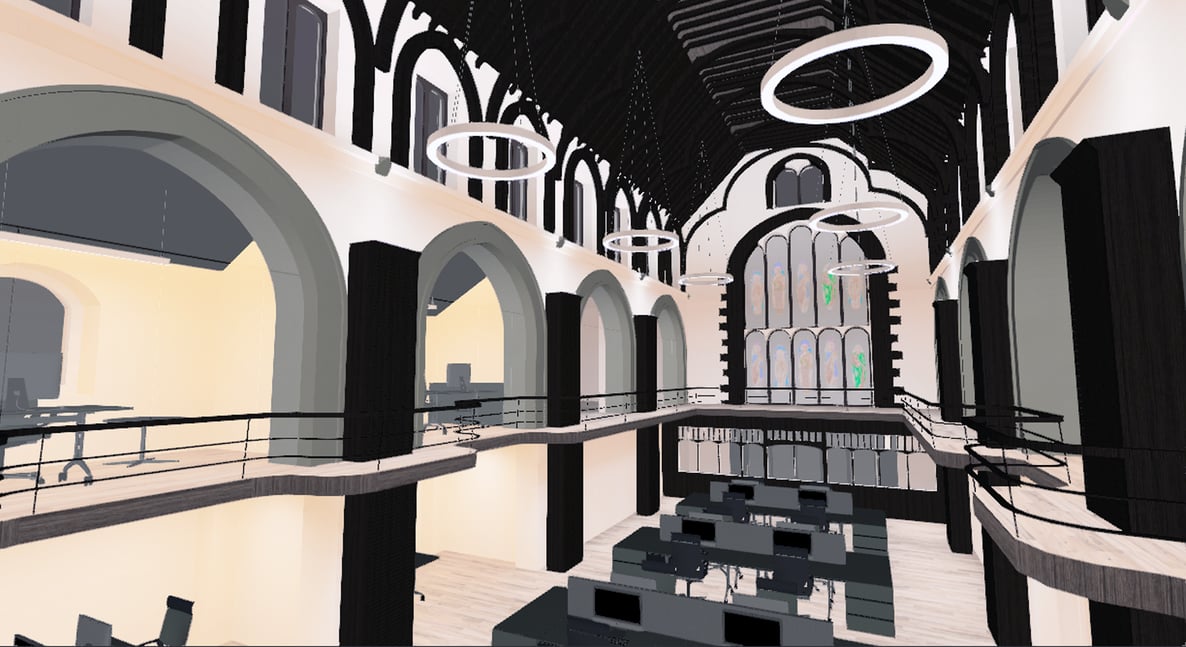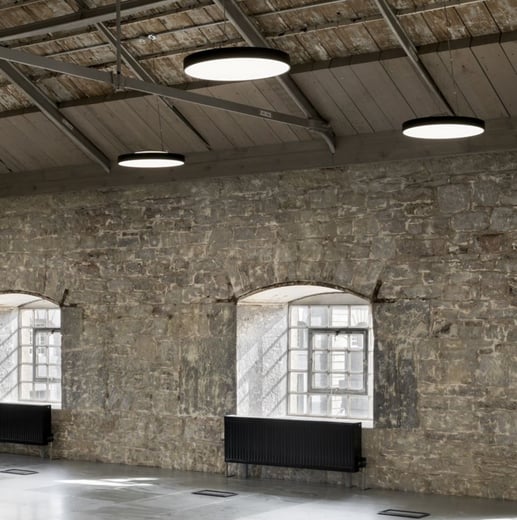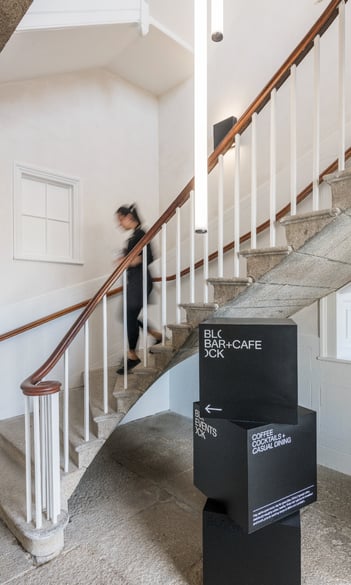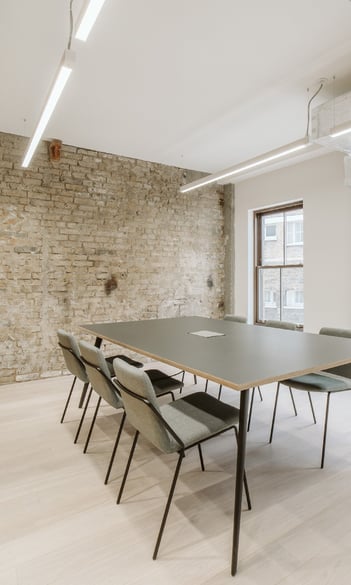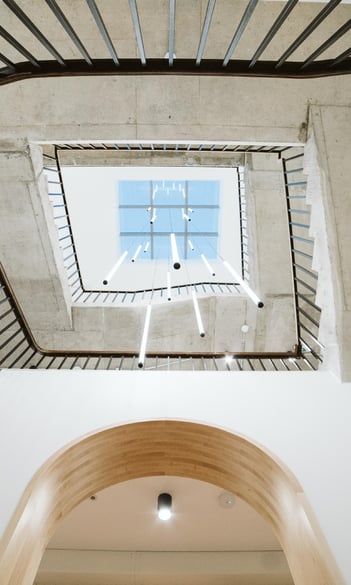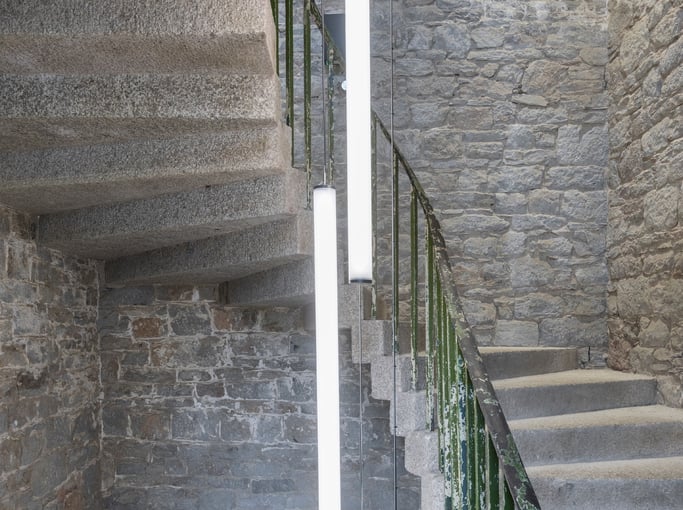Lighting for Historic Buildings - An Introduction
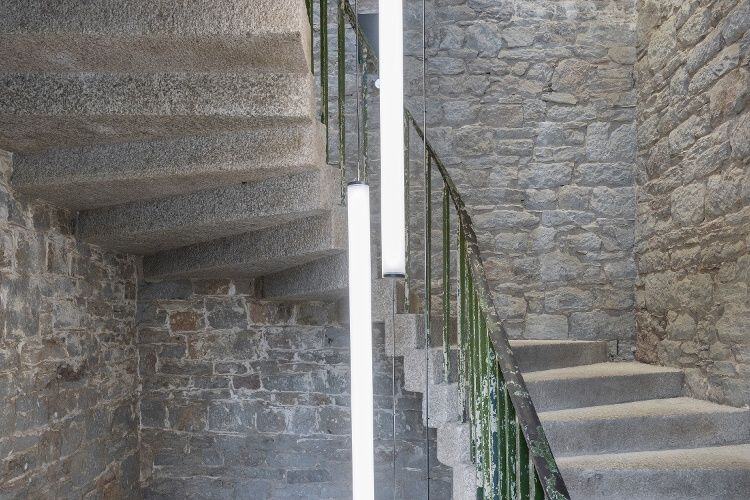
The use of historic buildings for commercial purposes is on the rise. The UK businesses, big and small, are choosing to trade from historic buildings. According to the survey by Historic England (2018), the number of listed buildings occupied by businesses has increased by 18% since 2012. The increase could be partly explained by large chains and brands taking on new premises in old buildings. Pubs and coffee chains count as the largest occupiers of listed buildings, followed by fashion brands.
Listed buildings have a lot of character, a visual appeal, and usually, they are positioned in prime locations. Brands often refer to the historical value of a particular building as a part of their brand narrative. Most historical buildings transformed into office buildings would pay a nod to history and often use the connection to history in the name and design brief of development. Interior designers would use the heritage of the building as an inspiration for the fit-out and furnishing.
When it comes to lighting the historical buildings, it is impossible to make general recommendations. Each building needs to be assessed on an individual basis and many factors need to be taken into consideration to complete a successful lighting installation. Following the advice in SLL Lighting Handbook 2018, we put together a list of some factors to consider.
Contents. 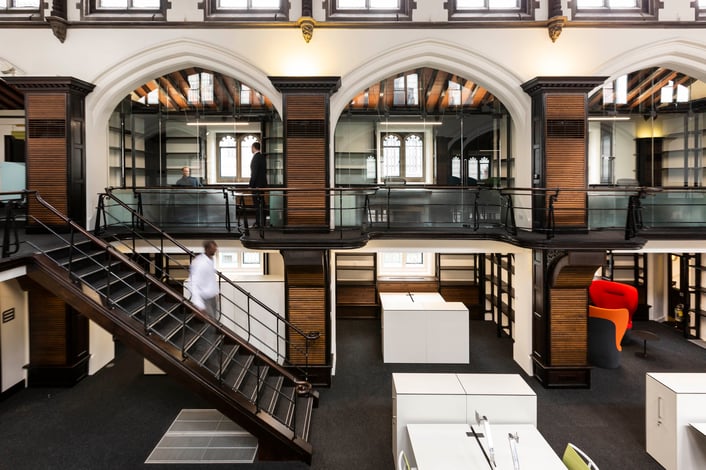
Assess the current state of affairs.
When refurbishing an old building, it is important to establish the facts first. What type of building is the particular property? Step one of designing new lighting for a historic space is to assess the current state of affairs.
Historical buildings can be divided into three types.
-
Buildings with no protection due to the level of architectural or historic interest
-
Listed buildings with a specific function
-
Listed buildings preserved in their own right
Establishing the basics.
The appeal of transforming a historic building into a modern space is the preservation of it's heritage and original details. So of course, we want (and are often obliged by law) to retain and preserve certain elements.
If the building is not a listed building, there is little limitation on where the new lighting can be fixed or where the wiring needs to be routed, other than the limitation of the building itself.
A site survey would bring these restrictions to light. Look out for factors such as the thickness of the walls, ceiling height, ceiling type, and material.
The shape of the ceiling will significantly influence the type of lighting that can be used. Vaulted ceilings can present specific challenges and so can high ceilings or very low ceilings.
Check out 13-20 Settles Street in London for inspiration on how we delivered fantastic lighting for vaulted ceilings as part of an impressive office space transformation.
Old buildings usually have spaces with restricted access, changes in floor levels leading to inconsistent ceiling height, tight voids, and perhaps not enough electric supply points, making the wiring more challenging.
When the property is a listed building or of historic interest, lighting needs a lot of consideration and the design team would work to several constraints. As the lighting can’t be attached to the fabric of the building, the design team has to come up with new ideas for how to provide appropriate lighting. Sometimes, lighting and services would be placed in special trunking systems, other times, light fixtures would be concealed in joinery. Freestanding up lighting can be also an effective method of lighting up pillars in tall buildings, meaning there is no fixing into the fabric of the building.
Historic buildings from part of the national heritage and are usually listed in a register of historic buildings. This means that when it comes to refurbishment, the options to change lighting, wiring or structure are limited. Listed projects are run by the appointed architectural practice, which would carry out deep research into the period and consult with recognised authorities on historic buildings.
Highlight architectural features.
When working on lighting for churches or any period buildings, the design objective is to highlight historical features. Lighting is a key component of this.
Often, uplighting is a great way of highlighting the historic fabric of the space, as in this example from Royal William Yard. We used the Talla Suspended Direct-Indirect, to distribute light up and down, to show off the historical ceiling in the event space.
An excellent way to draw attention to original stonework would be to use wallwasher lighting, such as Foss Wallwasher.
Spiral staircases benefit from statement lighting suspended in the centre, to take advantage of the historical feature that is rarely used in more modern buildings.
Lighting equipment and visual considerations.
Any new lighting for listed buildings needs to be in harmony with the historic interior. In many cases, any visible lighting needs to be of a design that matches the period of the building. When it is decided that luminaries of the period are being used, specialist lighting companies would restore the old chandeliers or create replicas.
It’s unlikely that this type of lighting would provide enough light to meet current regulations, and would likely need to be supplemented by other light sources, like background illumination, to provide light levels expected by modern visitors.
There are occasions when the best way of lighting a historic building is not to use period lighting, but to use a modern lighting system. This applies mostly, when the building is being used for a purpose for which it was not originally intended. For example, when converting a church building into an office space.
Check out the Sion Hall in London case study to see the new office lighting used in the old church building.
Usually, we work on heritage projects that are completely renovating the building into a new purpose, like a modern workspace, visitor centre or gym. We love seeing the key features of the building juxtaposed with slick architectural lighting like linear lighting Rio or, Ouse halo lighting or feature lighting Rydal to name a few examples.
(Left to right) The Melville Building, Royal William Yard, Plymouth // 49-51 Farringdon Road, London // 13-20 Settles Street, London
Daylight and Functionality.
Most historic buildings have been designed to be lit by daylight. The majority of buildings would have side windows, some will also have rooflights. Electric lighting is a relatively new invention and up until recently it was not possible to provide sufficient lighting any other way.
For mainly daylit spaces, it is important to look at areas that are not well lit. Supplementary electric lighting should be used in such a way that it doesn't destroy the daylit appearance of the space.
Whilst we need daylight to reduce the use of electric lighting, we also need to keep glare under control. In buildings with rare paintings or or facades, daylight can cause serious conservation concerns.
Functionality of lighting controls in historic buildings may be affected by the thickness of the walls. We would recommend using wireless controls where possible, simply because of the cabling restrictions.
When using lighting controls, we would recommend using mesh technology (like Casambi), as wifi can be affected by the thickness of the walls. Similar restrictions would apply to emergency lighting.
We are the Light Engineers.
Working alongside architects and consultants, we would make sure that the best lighting solution will be put together for each individual project. We have worked on countless projects for listed buildings and enjoy the technical aspects of heritage buildings.
“Listed buildings are interesting to work on, as they all come with their unique set of challenges. I am currently working on an interesting historic building project, which we will be revealing soon.”
Robert Lees, Senior Project Manager
Read Next.
- Reception Areas: Because First Impressions Count
- Linear Lighting: The Guide to Specification
- Recessed Lighting: The Guide to Specification
- Getting Smart With Connective Lighting
- Track Lighting: The Guide to Specification
- Back to Insights

